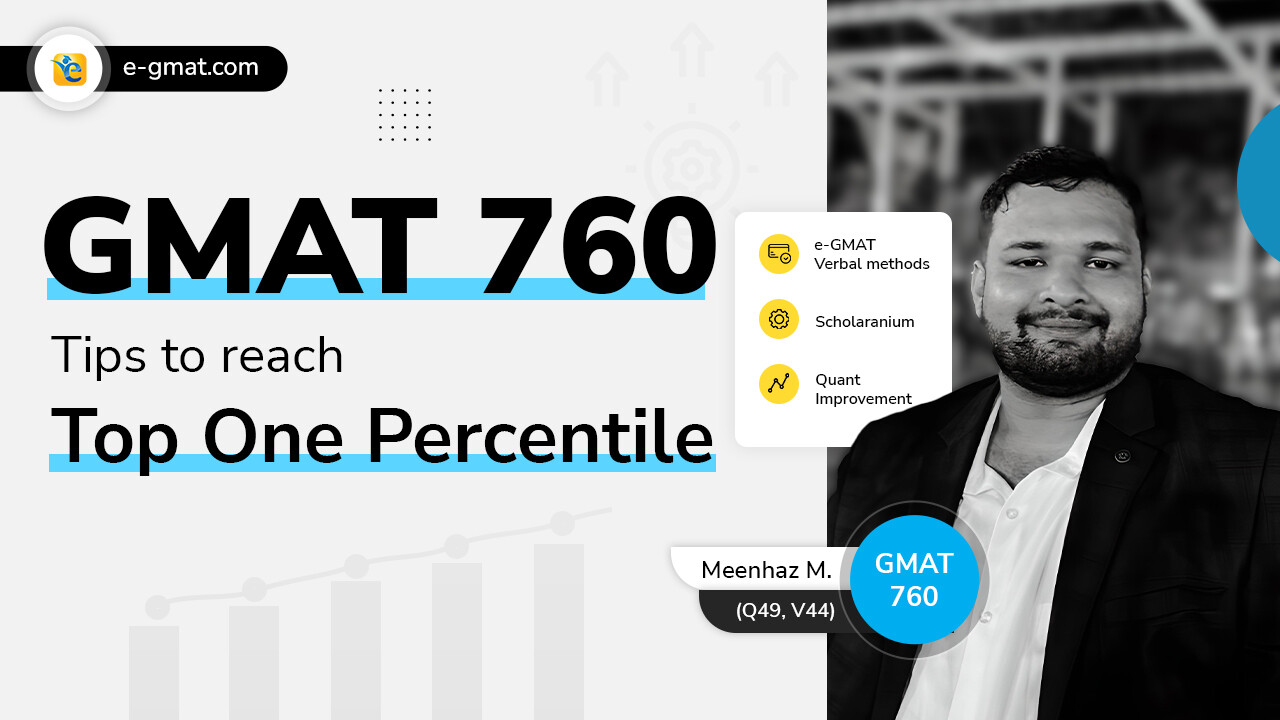Once we know our weaknesses, they cease to do us any harm.
GMAT 760(Q49, V44) scorer, Meenhaz targeted his shortcomings as soon as he identified them and spared no effort to convert them into strengths.
He’d self-studied for his first GMAT 700 attempt and felt his abilities were only superficial. He realized the need for a structured course to achieve his target score of 750+.
At the beginning of his second inning at the preparation, he scored a 680 in an e-GMAT SIGma-X mock. A thorough analysis of his first GMAT 700 ESR and his mock performance gave him a clear understanding of his knowledge and skill gaps. He knew that the difficulty in making every 10-point improvement from a 700 score would increase exponentially.
He used the e-GMAT platform extensively to ensure he left no stone unturned this time. Leveraging features, methods, and data available on the platform for both verbal and quant, he diligently followed the course until he began to feel confident.
Meenhaz, an engineering graduate, strongly recommends that anyone targeting a GMAT 750+ score take quant seriously. He says, “GMAT hard-level questions push your abilities to the max.”
In the following video, he shares his success story of going from the 88th percentile to the 99th percentile on the GMAT.
Rajat: Welcome, Meenhaz, and Congratulations on scoring a 760. How does it feel?
Meenhaz: Thank you. I feel relieved because the GMAT has been a lingering challenge. Due to work pressure and personal reasons, I had to take a few course extensions. It feels great to finally be done with the GMAT. A good score is a cherry on the cake.
Rajat: You’ve scored Q49 and V44, which is a phenomenal improvement. 96th percentile in SC and 91st percentile in both CR and RC, your scores are consistent across. You went from 700 to 760, which is a remarkable improvement overall.
GMAT 700 attempt and reasons Meenhaz chose e-GMAT
Tell us about your preparation that resulted in a GMAT 700; how did you go about it? How did you decide to go for the e-GMAT course?
Meenhaz: During my first attempt, my entire study revolved too much around Critical Reasoning. For Sentence Correction, I studied a few chapters from the Manhattan SC book. A lot of that preparation was about attempting mock tests. I did not even review or analyze those tests to the rigor I did this time.
Comparing the two of my preparations, I lacked many things from the process standpoint earlier. You should have your own organization of information, such as maintaining an error log; it was clearly missing the first time. I needed a course with a proper structure. It should not be the thing to be worrying about while preparing for a test like GMAT.
I also realized that 700 was not a bad score; from there, every 10-point improvement will require additional effort. You must have a tool that could provide you with that impetus. That’s when I started looking for a course and found out about e-GMAT via reviews on GMAT Club, where it was highly recommended.
Sometimes in the middle of the preparation, many people start doubting if the course is working or not. But for me, what really worked with e-GMAT was whenever I needed to focus on areas, I was traditionally weak at, the course was always there with the correct structure. After religiously following a few quant chapters, such as geometry and number properties, I realized this course is good enough to help me make necessary improvements.
I scored a Q48 on my first attempt and 49 on my second; my target was Q50. I am sure I may have made silly mistakes I would not have made otherwise. But two months into the preparation for GMAT with e-GMAT, I never felt I was leaving any topics or not confident about them. As you solve questions and complete any sub-section, you feel confident in your ability in those topics. I always had that.
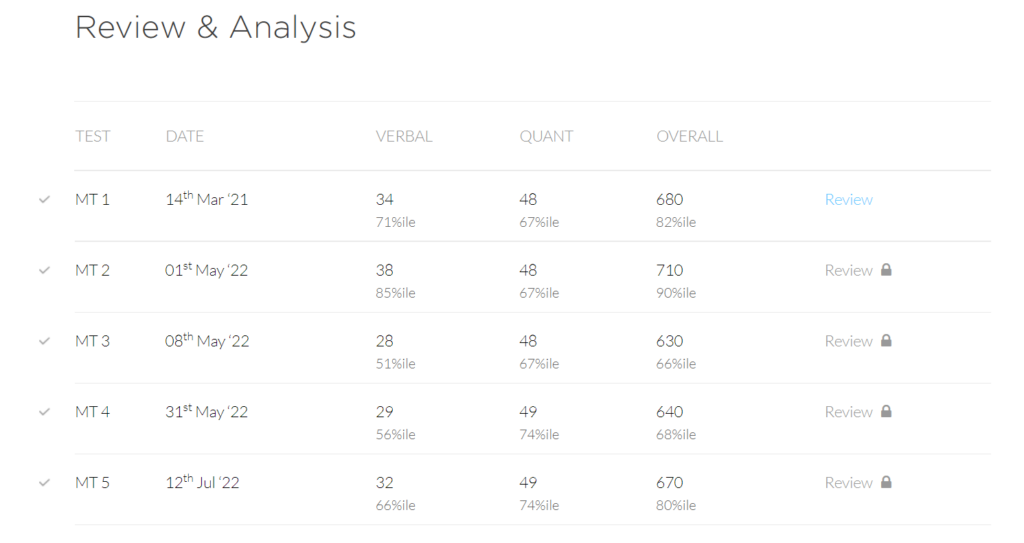
Rajat: You scored a 760, the 99th percentile; to get there, you need perfection. This requires first the confidence that you’ve not left any stone unturned and second that you have the process in place to fill the gaps; both are very important.
There were many instances where you put those processes in play, and sometimes even towards the end. You made sure to put in those reinforcements by looking at the data.
GMAT Verbal-CR preparations
Meenhaz, Critical reasoning was an area of worry for you. How did you approach CR in the two attempts? As you learned the pre-thinking method, how did your approach change for the second time?
Meenhaz: During my first attempt, CR was only about reading and reacting to the questions. I did not know about quantifiers; e-GMAT gives a lot of importance to quantifiers.
Rajat: Yes, quantifiers have the segmentation impact.
Meenhaz: These kinds of nuances were definitely missing the first time. I am an avid reader and was confident I could understand what was written. Later I realized that’s only half the work done. So, whenever I got an incorrect answer, I would revisit to check the gaps in my understanding of concepts.
During the second time with e-GMAT, I did pre-thinking extensively in the initial phase of my preparations, and it helped. But sometimes, I’d struggle to find specific scenarios. I even raised this query on the forum. And the response suggested that it’s okay if you can’t find any particular scenario as long as you can see the connection. Towards the end, I avoided going overboard with pre-thinking. I was no longer looking for specific scenarios.
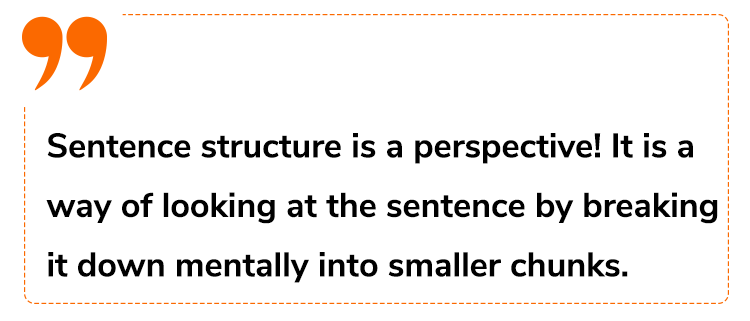
Rajat: You basically went through the entire process. Because of that, you also absorbed the creative portion of the information from the argument and processed it. You understood the conclusion and premises and did the logical gap analysis. Even then, if scenarios did not come across, you did not bother. But that is already a lot of analysis of the original information before looking at the answer choices.
Meenhaz: Yes. The test there was whether I was able to eliminate close choices even without thinking of specific scenarios. Once I learned to do that, I stopped worrying about them.
Rajat: This is okay because you’ve also got the quantifiers, which are heavily used in those close choices. As long as you can visualize those quantifiers, you’re fine. Going to the 91st percentile from 74th shows that you were able to do all of it.
In the GMAT, only two more ability levels exist beyond the 91st %ile. So, you were pretty much at the pinnacle in CR.
Challenges with GMAT SC
Let’s talk about SC. You went from 85th percentile to 96th percentile. As a voracious reader, how did you approach SC the first time, and how did you modify it later?
Meenhaz: During the first attempt, there was only one preparation using the Manhattan SC guide. Other than that, I was intuitively answering questions. In the 85th percentile that I scored in my first attempt, there was also a breakup of logical meaning and grammar. And in the ESR, I noticed I was somewhere around 85-90th %ile in the logical meaning but at 50th %ile in grammar.
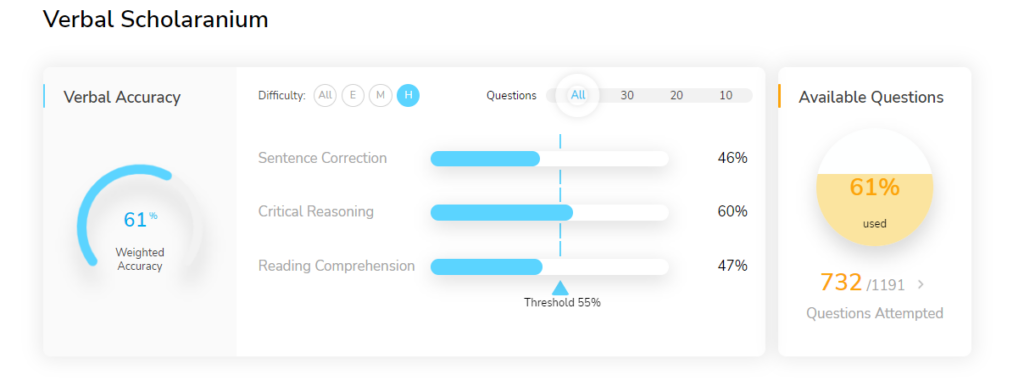
That was also one of the cues that made me realize I needed a course. It’s difficult to remember all the grammar rules, so you require a structure that the e-GMAT provides.
While navigating through the course, if you get any type of question wrong, you try to understand it with the given solution. And even if you get it right, it doesn’t let you go. You get a similar question in the next quiz until you get comfortable facing that type of question even at the hardest difficulty level. That structure was fundamental, and that was also the reason why I took the e-GMAT course.
While navigating through the course, if you get any type of question wrong, you try to understand it with the given solution. And even if you get it right, it doesn’t let you go. You get a similar question in the next quiz until you get comfortable facing that type of question even at the hardest difficulty level. That structure was fundamental.
I think I spent too much time on grammar which messed with my mind. It resulted in a severe dip in my SC abilities until I got the modifiers and parallelism into play.
Rajat: You did the grammar well, but as a logical thinker, you overanalyzed. I can see a dip in the Scholaranium trend. It also cascaded to your mocks because you were taking too long in this analysis.
What were the 2-3 things you fixed to get back to the 96th percentile, which is again only a level shy of the perfect score in SC.
Meenhaz: I kept returning to the e-GMAT course for modifiers and parallelism. I also liked the Manhattan SC book, especially the chapters covering more complex concepts in modifiers.
So, after revising the Manhattan book, I did a revision with e-GMAT for the approach. These are the two things I did. After that, I practiced with the unanswered questions. I never explicitly selected modifiers. That’s the thing about SC; there are too many things to worry about.
I’d re-analyze the wrong questions in the second round with them. I’d try to reason and eliminate the other four choices, even if I remembered the correct answers.
Although my scores were going down, I had the confidence because when my preparation was at a nascent stage, I scored 85%ile in SC in the first attempt. I was better prepared this time to not score so low.
Read this article to learn about strategies and action plans to help you ace GMAT Verbal.
Rajat: You built an error log only for SC. How did that help?
Meenhaz: The purpose behind maintaining the error log was to build a record. There were not too many questions in my error log, but I recorded my thoughts behind each.
There was one column where “what corrective measures did you take from the question” had to be recorded. I’d spend 15-20 minutes updating that column along with my thoughts on both the right and the wrong answers.
Rajat: That exercise makes you think a lot. You can’t simply fill it out.
Meenhaz: It’s crucial to think about all that.
I joined study groups where I saw a couple of error logs and noticed only official explanations of questions were recorded in the error logs.
Rajat: Along with jotting down what you missed; it is important to note why you missed it. The official solution doesn’t answer that question.
Meenhaz: I struggled a lot with one specific type of SC question. Those were questions where one of the answer choices would sound better than the original sentence. The original sentence would have a possible but weird-sounding meaning. In such questions, I tend to change the meaning for the better-sounding option or go for elegance because it makes more sense.
Sentence Correction is about finding the answer where sentence construction fits the original meaning as long as it is something plausible.
Rajat: Could you guess in the official guide how many times the word “intended meaning” is there in the description of GMAT Sentence Correction?
Meenhaz: I have no idea. My guess would be 10 times.
Rajat: It’s 22 times. People think there is nothing called intended meaning.
GMAT is a test of communication. The author has something in mind when he’s trying to communicate, and you’ve got to maintain that piece, given it’s logical. You’ve to infer when it’s not logical, which is where the answer choices help sometimes. And if they don’t, you have to spend more time on the original option. But if the meaning is logical, you must maintain it. You can’t go for elegance.
Meenhaz: I think this was something e-GMAT tests well. For example, one question talked about the author and his book. The intended meaning said that the book had this specific effect, and the options suggested that the author had the effect; both had logical meanings. I used to fall for these quite often. That’s when the modifiers and parallelism issues used to get highlighted even more.
Rajat: But these are not even the modifier issues, to begin with. These are questions where you fail to keep the original meaning in mind while evaluating the answer choices.
You also had timing issues in SC; how did you fix that?
Meenhaz: I took the help of custom quizzes where you can select 36 questions of a particular sub-section. The guide is there to help you choose from the easy, medium, and hard-level questions. I did that very religiously for the last 10-15 days.
I learned about my timing problem while doing the official GMAT mock. When I was at the 25th question, I had only 6-7 minutes left.
I faced this problem during my first GMAT attempt as well, but I thought it was because of the conceptual gap. But you need to build stamina.
Rajat: In your account, you have 3 full-length mocks simulated using custom quizzes. You also have a few mini mocks with two verbal sub-sections.
Meenhaz: That’s because I was out of unanswered SC questions towards the end.
Engg. graduate’s quant journey
Rajat: Let’s talk about quant. Which were the areas of bigger worry for you? How did you go about them, and how did the course structure help you?
Meenhaz: Being an Engineer, I have been traditionally good with Mathematics. But Geometry has been one of those areas I have never been 100% confident in, especially for the higher-level questions.
I realized that more challenging geometry questions are really about Data Sufficiency. Where you need to understand the properties, why you’ve arrived at them, and which of those are essential. Sometimes, there are a lot of derived properties with 100s of cases that are suitable for one particular question but are not universally helpful, but you cram your head with those.
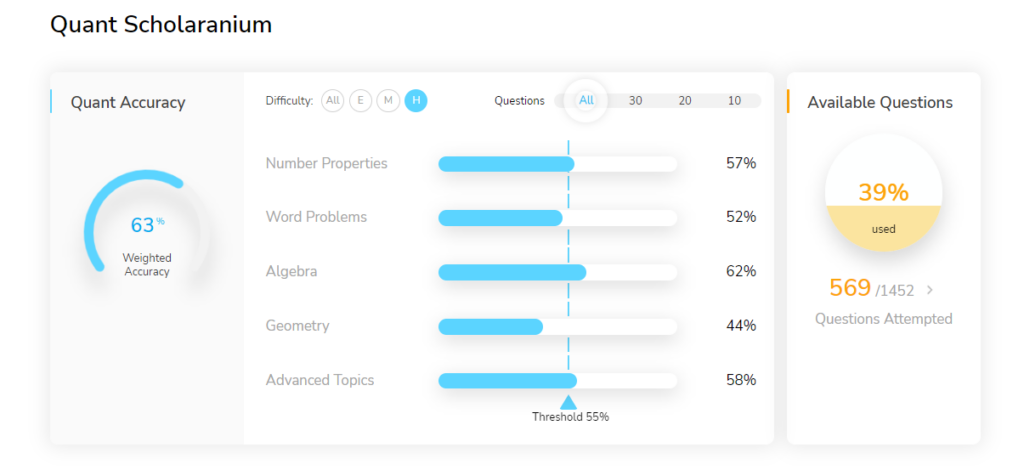
I did geometry first and gave as much time as possible. I followed the course structure. With the e-GMAT course, you cannot half-learn any concept. It will be shown on the e-GMAT skills practice quiz. With the e-GMAT course, you cannot half-learn any concept. It will be shown on the e-GMAT skills practice quiz.
With the e-GMAT course, you cannot half-learn any concept. It will be shown on the e-GMAT skills practice quiz.
While revising, I returned to those quizzes where I had not scored well. Once I scored 100%, I’d skip ahead; otherwise, I’d replay questions to find out whether I got the question incorrect due to some silly mistake or conceptual gap. That helped me determine whether I needed to go back and study the concept again.
Three tips to go from 680 to 760
Rajat: I am looking at your geometry course flow here. After your diagnostics quiz, where you scored a 41%, the course skipped the concepts files for you. But you diligently reviewed the application quiz.
Now that you’re done with the GMAT and scored a 99th percentile. What three behaviors would you recommend to anyone trying to go from 680 to 760 on the GMAT?
Meenhaz: One thing for verbal I’d suggest is to try to read as much as possible. Things you like or don’t, books or articles based on your mood. Pick some dense books which put out a lot of information.
Second, take quant seriously. Many people with engineering backgrounds think it’s easy to get Q51, but it requires a lot of attention. You might find word problems very easy, but Number properties may cause issues. Use data to find out your problems and fix them.
Third, use an error log. Analyzing what’s going wrong is very important. And the analysis should be done from a third person’s perspective. You’ve got to be honest while highlighting the mistakes. You might sometimes feel that you’ve things under control because you’ve been doing it all this while, but GMAT questions push you to the edge. If you’re targeting 760, you must understand the passage’s important parts to draw the connections. It requires a lot of practice in thinking, not in the number of questions.
Maintain your error log and record your thoughts; it’s vital. I did a lot of it mentally, but I had the support of the e-GMAT course, where I could flag and come back to those questions, which helped. People who are self-studying must maintain their thought processes in the error log.
It’s always good to revise your concepts, even if it’s just 3 days before the exam.
Rajat: I’ve played cricket at the club level; that’s 15 years back. I was part of the German state team. But now, whenever I go back to playing, I’d practice the same strokes I used 25 years ago.
Revising concepts is very important, especially before the test.
Meenhaz: Another thing I’d like to point out. Sometimes instead of focusing on the current question, we start thinking about our test performance basis the previous questions attempted. We must avoid that.
I did that during my first GMAT test. But this time, I was more confident because of the test readiness. Like a goldfish, I focused only on the question at hand and forgot about the previous question entirely.
Also, during the exam, sometimes we get overwhelmed with the increasing difficulty level of questions.
I was confident in my verbal abilities, but one particular comprehension made me anxious. I paused and took deep breaths for 10 seconds before resuming the test. It worked.
Rajat: It’s an excellent way to calm yourself as it impacts your performance. Thank you very much, Meenhaz, for your time. I am sure many people would benefit from your input.


